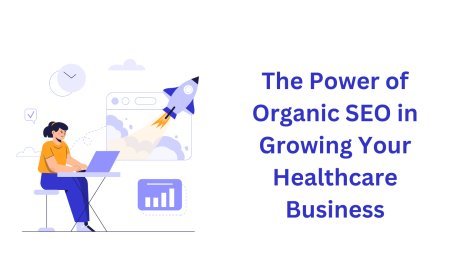Water-soluble Fertilizers (WSF) Manufacturing Plant Project Report 2025: Key Steps, Challenges and Solutions

Introduction
A Water-Soluble Fertilizers (WSF) Manufacturing Plant Project Report is a key document for anyone considering the establishment of a plant focused on producing water-soluble fertilizers. These fertilizers are crucial in modern agriculture, offering essential nutrients to crops in a form that is easily absorbed by plants. With the growing global demand for sustainable and efficient agricultural practices, water-soluble fertilizers have become a key component in increasing crop yield and ensuring food security. A comprehensive project report outlines the necessary steps, from production to distribution, ensuring the plant’s success while providing critical details for financial investors and regulatory authorities.
This article aims to explore the key components of a Water-Soluble Fertilizers (WSF) Manufacturing Plant Project Report by outlining the processes, market demand, and technical and financial aspects associated with setting up such a plant.
Understanding Water-Soluble Fertilizers (WSF)
Water-soluble fertilizers are specially formulated to dissolve in water, providing plants with immediate access to essential nutrients. These fertilizers are commonly used in agricultural fields, greenhouses, and hydroponic farming systems. Unlike traditional fertilizers, which are applied to the soil, water-soluble fertilizers are dissolved and directly applied to the plants through irrigation systems or foliar spraying. The key ingredients in WSFs typically include nitrogen (N), phosphorus (P), potassium (K), and micronutrients like calcium, magnesium, and trace elements that are vital for plant growth.
The benefits of using water-soluble fertilizers include improved nutrient uptake, precise control over nutrient distribution, and reduced nutrient loss, making them a preferred choice for high-value crops and intensive farming systems. The growing adoption of controlled-environment agriculture is further driving the demand for these products.
Key Components of a Water-Soluble Fertilizers (WSF) Manufacturing Plant Project Report
A Water-Soluble Fertilizers (WSF) Manufacturing Plant Project Report consists of several crucial sections, each addressing various aspects of the manufacturing process, market outlook, and operational requirements. Below are the key components that should be included in a detailed project report.
1. Executive Summary
The executive summary of the project report provides an overview of the entire project, including the objectives, scope, and key financial figures. It highlights the need for the manufacturing plant, its potential impact on the agricultural sector, and the expected return on investment. This section should offer a snapshot of the production process, the products to be made, and the target market.
2. Market Analysis
Understanding the market demand for water-soluble fertilizers is a critical element of the project report. This section should present data on the growth of the global fertilizer industry, the demand for WSFs, and the competitive landscape. Key factors affecting market growth include the increasing adoption of modern farming practices, the need for efficient nutrient delivery systems, and rising concerns over environmental sustainability. A detailed market analysis will help gauge the potential success of the plant, identify customers (e.g., farmers, distributors, agricultural cooperatives), and assess industry trends.
Get a Free Sample Report with Table of Contents@
3. Location and Site Analysis
Selecting the right location for the manufacturing plant is vital to the overall success of the project. The location should be strategically chosen to minimize raw material procurement costs, reduce transportation costs, and ensure efficient distribution to target markets. Proximity to agricultural hubs, access to raw materials, and availability of skilled labor are some of the factors to consider when determining the plant's location.
Additionally, the location must comply with local zoning laws, environmental regulations, and safety standards. A comprehensive site analysis should also include infrastructure assessment, availability of utilities (electricity, water), and waste disposal facilities.
4. Raw Materials and Supply Chain Management
The manufacturing of water-soluble fertilizers requires a variety of raw materials, including:
- Nitrogen sources (e.g., ammonium nitrate, urea)
- Phosphorus sources (e.g., monoammonium phosphate (MAP), diammonium phosphate (DAP))
- Potassium sources (e.g., potassium chloride, potassium sulfate)
- Micronutrients (e.g., iron, zinc, boron, manganese)
This section should outline the sources for these raw materials, procurement strategies, and logistics. A well-established supply chain is critical to ensuring a steady flow of inputs, preventing production delays, and minimizing costs.
5. Production Process
The production process for water-soluble fertilizers typically involves the following stages:
-
Raw Material Preparation: The raw materials are precisely weighed and mixed according to specific formulations. This is a critical step to ensure the correct nutrient balance for each type of fertilizer.
-
Solubilization: The raw materials are dissolved in water using specialized equipment to create a water-soluble mixture. This process may involve heating and chemical reactions to ensure complete solubility.
-
Drying and Granulation: After solubilization, the mixture is either dried and granulated or processed into liquid fertilizers. Granulated fertilizers are easier to handle and store, while liquid forms are applied directly to irrigation systems.
-
Packaging and Distribution: Once the product is produced, it is packaged according to customer requirements, either as powder, granules, or liquid form. The packaging should be durable, user-friendly, and capable of maintaining the fertilizer’s effectiveness during storage and transport.
Each stage of production should be optimized for efficiency and consistency to meet industry standards and customer expectations.
6. Technology and Equipment
The choice of technology and equipment plays a crucial role in the efficiency and quality of the production process. The plant report should detail the types of machinery and technologies required, including:
- Mixers and blenders for combining raw materials.
- Solubilizers for dissolving materials in water.
- Granulators and dryers for producing the final product.
- Quality control systems to ensure the product meets industry standards.
Automation and the use of modern machinery can help reduce operational costs and improve product consistency. The report should assess whether to invest in fully automated systems or a semi-automated setup, based on the scale of production.
7. Cost Analysis
A thorough cost analysis is essential for understanding the financial viability of the project. This section should include:
- Capital Investment: Costs for setting up the plant, including land, buildings, machinery, and utilities.
- Operational Costs: Ongoing expenses such as raw material procurement, labor, maintenance, energy consumption, and logistics.
- Break-even Analysis: The point at which the plant is expected to cover its initial investment and start generating profits.
A detailed financial plan should also be included to estimate expected revenue based on projected sales, along with a profit and loss statement for the first few years of operation.
8. Regulatory Compliance
Manufacturing water-soluble fertilizers requires compliance with various local, national, and international regulations. The project report should identify all necessary licenses and permits needed for the plant’s operation. It should also outline environmental regulations concerning the production of fertilizers, particularly in terms of waste management, emissions control, and chemical handling.
9. Environmental Impact Assessment
Fertilizer production can have significant environmental implications, including water pollution, air emissions, and energy consumption. The environmental impact assessment (EIA) should analyze the potential environmental risks of setting up the manufacturing plant and propose mitigation strategies, such as:
- Wastewater treatment systems
- Emission control technologies
- Energy-saving practices and renewable energy options
Implementing these measures ensures the plant’s operations are sustainable and comply with environmental regulations.
10. Human Resources and Training
The success of the plant depends on having a skilled workforce. This section should detail the human resources required for various departments (production, quality control, maintenance, administration, etc.). It should also outline plans for training workers to operate machinery, adhere to safety protocols, and follow quality control measures.
11. Marketing and Sales Strategy
To ensure the plant’s success, a robust marketing and sales strategy is needed. This section should describe the target market for water-soluble fertilizers, including local farmers, large-scale agricultural operations, and international customers. The report should identify sales channels (direct sales, distributors, online platforms), pricing strategies, and promotional tactics.
12. Financial Projections
The financial projections section should outline the expected revenue, expenses, and profits for the first few years of operation. It should include:
- Revenue projections based on anticipated sales volume.
- Break-even analysis to determine the point at which the plant will become profitable.
- Cash flow projections to ensure the plant’s financial stability.
These projections will help investors assess the potential return on investment.
13. Risk Analysis
Like any manufacturing venture, setting up a WSF plant involves various risks, including fluctuations in raw material prices, changes in agricultural trends, and environmental factors. The risk analysis should identify these challenges and suggest mitigation strategies to minimize their impact on the plant’s operations.
What's Your Reaction?
































































